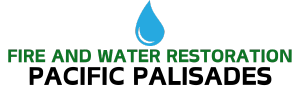Experiencing fire or water damage in your home or business is overwhelming. Whether it’s the aftermath of a house fire, burst pipe, flood, or appliance leak, the situation demands immediate and careful action. While your instincts may push you to start cleaning up right away, doing the wrong thing can make the damage worse, pose health risks, or even invalidate insurance claims.
To help you recover quickly and safely, here are the most important do’s and don’ts of fire and water damage cleanup.
The Do’s
Do Prioritize Safety First
Before doing anything, make sure it’s safe to enter your property. Fires and floods can create hidden dangers such as structural instability, electrical hazards, and harmful contaminants. If the fire department or emergency response has deemed the area unsafe, wait until they give the green light before entering.
Do Turn Off Utilities
If you can safely access your electrical panel or main water valve, shut off the electricity and water to prevent further damage or electrocution. Water can interact with electricity in dangerous ways, and gas leaks may also be a concern after a fire. When in doubt, call a professional.
Do Document the Damage
Before cleanup begins, take detailed photos and videos of all affected areas. This documentation is crucial when filing an insurance claim. Be sure to capture both wide-angle shots and close-ups of damaged items, structures, walls, and flooring.
Do Call Your Insurance Company
Notify your insurance provider as soon as possible. They may offer advice on what to do (and what not to do) and provide instructions on how to file a claim. They may also refer you to trusted restoration companies in your area.
Do Ventilate the Area
If it’s safe, open windows and doors to allow fresh air to circulate. This helps reduce moisture, smoke odor, and airborne contaminants. In water damage situations, ventilation can speed up the drying process and reduce mold risk.
Do Remove Wet and Damaged Items (If Safe)
Remove water-soaked rugs, furniture, curtains, and other items to help speed up drying and reduce mold growth. For fire damage, removing charred or smoke-damaged items can also reduce odor and debris. Again, only do this if you’re certain the area is safe to enter.
Do Call a Professional Restoration Company
Fire and water damage restoration is not a DIY job. Certified professionals have the right equipment and training to handle the cleanup safely and thoroughly. They can also detect hidden damage, such as mold in walls or structural weaknesses, that you may miss.
The Don’ts
Don’t Use Electrical Appliances or Lights
After fire or water damage, your electrical system may be compromised. Turning on lights, ceiling fans, or plugged-in appliances could cause shock or start another fire. Wait for an electrician or restoration expert to inspect the system first.
Don’t Attempt to Clean Soot Yourself
Soot can be greasy, acidic, and spread easily. Trying to wipe it off walls or furniture without proper cleaning methods can smear the soot, cause stains, or embed particles deeper into the surface. Fire cleanup requires special equipment and chemicals designed for soot removal.
Don’t Use a Vacuum on Wet Areas
Vacuuming up standing water or wet debris with a regular household vacuum can be extremely dangerous and may damage the machine. Wet/dry shop vacs can sometimes be used, but only if they are rated for water and the power source is safe.
Don’t Ignore Mold Growth
Mold can start growing within 24 to 48 hours after water exposure. Even if things “look dry,” mold spores can linger in walls, ceilings, and furniture. If you notice musty smells or discoloration, call in professionals to test for mold and handle remediation.
Don’t Delay Cleanup
Time is critical in both fire and water damage situations. The longer you wait, the worse the damage becomes. Wood warps, drywall deteriorates, and mold spreads fast. Even if you’re waiting on your insurance adjuster, you can take safe, preventive measures like removing loose debris and ventilating.
Don’t Throw Away Damaged Belongings Too Soon
You might be tempted to toss out fire- or water-damaged items, but your insurance company may need to see them first. Unless they pose a health risk, try to store them in a safe spot until your adjuster can assess them.
Don’t Handle Hazardous Materials
Soot, ash, and contaminated floodwater can contain harmful substances like lead, asbestos, and bacteria. Leave handling of these materials to certified professionals who use protective gear and proper disposal methods.
Dealing with the aftermath of fire or water damage is never easy, but following the right steps can minimize further loss and health risks. The key is knowing what to do—and just as importantly, what not to do. Stay safe, document everything, and call professionals when needed. Your quick and informed response can make all the difference in how fast your property recovers.
If you’ve recently experienced fire or water damage and need expert cleanup and restoration help, don’t wait. Professional services can assess, clean, restore, and help you get back to normal faster—and safer.
